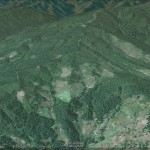According ot the Choson Ilbo:
In the scorching afternoon heat last Thursday, two Asian laborers sat in front of a grocery store near a building site in Vladivostok, Russia, cooling themselves with mugs of draft beer. When asked if they were North Koreans, the men asked, “Are you from South Korea?”
One of the laborers, who was in his 40s, then said there were around 50 workers from all over North Korea, including Pyongyang and Nampo, at this particular site alone, and they can be seen at practically every construction site in Vladivostok.
The entire Siberian city has turned into a building site in preparation for the 2012 APEC Summit as roads are being widened and hotels and apartments built. The projects have created booming conditions for North Korean laborers. They can easily be spotted at practically any construction site, cheap restaurant or near housing projects. One North Korean laborer in his 50s said, “We earn US$500 a month if we work from 7 a.m. until 10 p.m. Aside from missing our families, things are not that difficult.”
There are an estimated 3,000 North Korean laborers in Vladivostok. One source there said, “In the past, most of the North Korean laborers worked at logging sites near Khabarovsk, but now most of them work at building sites here.” City officials expect around 3,000 more North Koreans to arrive.
But they are getting stripped of their hard-earned money by the regime. They are sent to Vladivostok by North Korean companies tasked with raising foreign currency and must send a set portion of their earnings back to the North. When their three- to five-year contracts expire, they return home.
One South Korean resident in Russia said, “Even in winter, when there is no work, North Korean workers are threatened by their government minders, who extort money by telling them it is up to them whether they want to stay in Russia or go back to the North and starve.”
For these laborers, money comes before loyalty to the regime. Some with more experience working abroad earn extra cash on the side by working as handymen in Russian homes after they make their payments to North Korean officials.
Recently, there have been rumors that North Korean workers are having to be especially careful. Seven North Koreans working in Vladivostok were apparently sent back to the North after they were caught watching South Korean movies on DVD. One South Korean resident in the city said, “North Korean laborers are allowed to watch porn, but they get in big trouble if they watch South Korean movies.” The resident said North Korean laborers refused to watch South Korean movies even if they are free.
“North Korean laborers send back up to $1,000 a month,” an ethnic Korean merchant in China said. “Things must be better than living in North Korea, but they don’t seem to make enough money compared to the hard work they do.” He said North Korean workers are notorious for never buying anything.
Read the full story here:
Vladivostok Teeming with N.Korean Laborers
Choson Ilbo
2011-8-18

